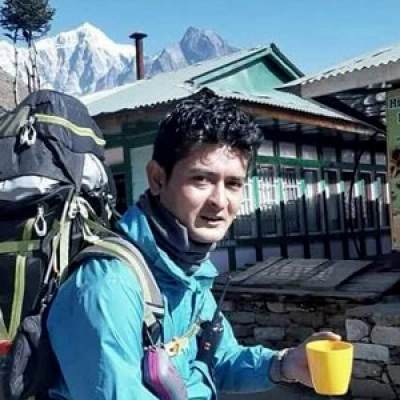Nepal has captured the hearts of travelers all over the world with its breathtaking scenery and rich cultural heritage. While prominent places such as Kathmandu and Everest Base Camp attract the majority of visitors, there is a hidden gem in the country's north: Upper Mustang. This lonely region, known as the "Kingdom Behind the Mountains," offers a compelling experience for anyone looking for an extraordinary journey. However, non-Nepalese visitors may wonder: Is it easy to enter Upper Mustang?
Is it easy for Non-Nepalese to enter Upper Mustang?
Visiting Upper Mustang as a non-Nepalese has its unique set of considerations. The territory is classified as a restricted area, requiring a special permit known as the Restricted Area Permit (RAP). To receive this permission, tourists must follow specific regulations, such as traveling in minimum group size and hiring the services of a registered trekking organization or professional guide for the duration of their excursion.
There are also financial concerns to consider, as Upper Mustang permits and costs are greater than in other trekking zones in Nepal. Seasonal limits also apply, since extreme weather conditions render certain months unavailable. Nonetheless, these safeguards are in place to protect Upper Mustang's cultural history and fragile ecology. In this blog, we will look at the complexities of visiting Upper Mustang as a non-Nepalese traveler, putting light on the obstacles and opportunities that await those who want to discover here’s hidden riches.
Restricted region Permit (RAP)
Upper Mustang is classified as a restricted region in Nepal. Visitors, both Nepalese and non-Nepalese, must obtain a Restricted Area Permit (RAP) to enter this zone. The Department of Immigration in Kathmandu issues this permit, which is valid for a set period. Non-Nepalese visitors must travel with a registered trekking agency or a certified guide for the duration of their stay.
The Restricted Area Permit regulates tourism operations and controls the number of visitors to protect the region's unique cultural and ecological assets. It enables the government to monitor and control the impact of tourism, assuring the long-term development and growth of the locals.
Minimum Group Size Requirement
Non-Nepalese travelers must travel in groups of at least two people to obtain the RAP. According to Nepalese government laws, solo trekkers are not permitted to access Upper Mustang. A group has to safeguard the health and safety of passengers in this remote area.
Traveling in a group also improves the whole experience because you can share the adventure with compatible people and get help if there are any crises or challenges along the route. It promotes friendship and provides for a more immersive cultural engagement with local populations.
Cost and Fees
Upper Mustang has significantly higher permission and fee costs when compared to other hiking destinations in Nepal. Non-Nepalese RAP fees are established at a fixed rate per person per day, which might be costly for budget travelers. Non-Nepalese trekkers must also pay the Annapurna Conservation Area Project (ACAP) charge as well as the TIMS (Trekkers' Information Management System) card fee.
It is critical to budget for the costs associated with organizing a trip to Upper Mustang. The fees help the region's preservation and conservation efforts by funding the upkeep of trails, infrastructure, and cultural heritage sites. The investment in this one-of-a-kind event benefits both the individual and the community.
Seasonal Limitations
Another factor to consider is the seasonal restrictions that apply to visitors. During the winter months (December to February), the location is inaccessible due to adverse weather conditions such as heavy snowfall and high winds. The finest seasons for trekking in Upper Mustang are spring (March to May) and fall (September to November) when the weather is often consistent and good.
The skies are clearer during these seasons, affording beautiful views of the snow-capped mountains, and the temperatures are moderate, making trekking more comfortable. It is critical to plan your vacation carefully to have a safe and pleasurable experience. Before going on your journey, check the weather forecasts and speak with local trekking agencies for the most up-to-date information.
Cultural and environmental preservation
The limits imposed on entering Upper Mustang are largely intended to protect the region's unique cultural heritage and fragile ecosystem. It is home to centuries-old cave homes, ancient Buddhist monasteries, and a distinct Tibetan-influenced culture. The government can assure the preservation of this cultural treasure by managing visitor numbers and regulating access. The small number of tourists who visit the region helps to preserve the authenticity and purity of local customs and practices. It also reduces the influence on the fragile ecology, allowing its natural beauty to thrive. Non-Nepalese visitors can contribute to the region's sustainable development and help preserve it for generations to come to enjoy by respecting local cultures, traditions, and the environment.
Although visiting Upper Mustang as a non-Nepalese traveler may be difficult, the attraction of this lonely region is well worth the effort. The requirement for a Restricted Area Permit (RAP), minimum group size, charges, and seasonal limits are all measures put in place to protect Upper Mustang's unique cultural history and sensitive ecology.
Non-Nepalese trekkers can, however, go on a memorable journey to Upper Mustang with adequate planning, adherence to restrictions, and consultation with registered trekking firms. Immersing oneself in the mystical beauty of this secret realm beyond the mountains is an unforgettable experience.
While it is not the simplest spot to reach, the rewards of experiencing its unique charm make the journey worthwhile. So, if you're looking for a unique journey that combines stunning scenery, old heritage, and a spirit of adventure, try visiting Upper Mustang—a region that will leave an unforgettable impact on your soul.



